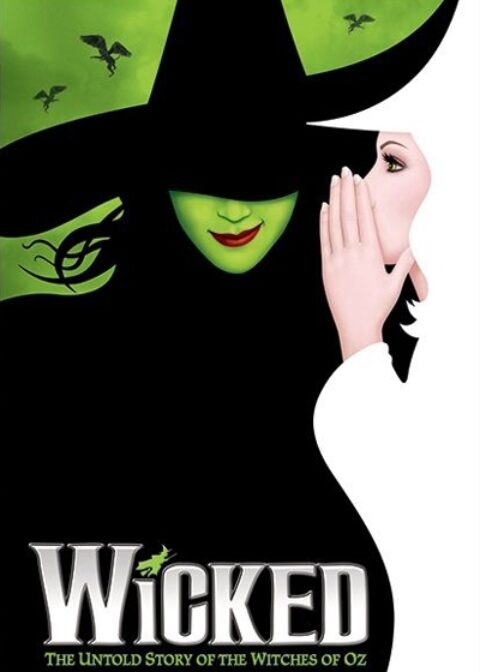Fat and Tall People on Broadway. Theatre Seats Can Be Uncomfortable For Overweight and Tall People. There Are Limits On How Fat or Tall Patrons Can Be To Fit In The Seats
Overweight and Tall Theatre Patrons: A Recap
Over the last few decades, Broadway producers have put a great deal effort into making their Broadway show productions more widely accessible to a wider range of audience members. For instance, low cost ticket initiatives have proliferated in recent years, such as student and general rush tickets at prices around $35. Theatre institutions such as Lincoln Center and Roundabout offer low cost tickets to patrons under the age of 30, deemed the LincTix and HipTix programs respectively. However, while making sure Broadway shows can be seen by patrons from a wide range of social demographics, how about patrons of a wider range of girth and height?Unlike modern cineplexes and sports stadiums, most Broadway theatres are very old buildings, some built in the late 1800's. All these theatres happen to have fairly small seats because 100 years ago, people were considerably smaller than they are now. As our tastes have evolved in the last century, both in terms of theatre and gastronomic fare, so has the average size of human beings and their expectation of comfort.
What is the maximum weight and height for a Broadway patron to be comfortable?
Although it varies by Broadway Theatre (as some of the redesigned theatres have slightly larger seats), the accepted maximum weight for a Broadway seat is 250 lbs. The maximum height is 6'2". Anything above those parameters will be uncomfortable for the patron and distracting for the other patrons at the show. The Broadway ushers will never actuallyturn away a Broadway patron, but they may have their work cut out for them if the show is sold-out and they have nowhere to move them to that is more appropriate.Seating Problems For Tall People:
According to one study conducted by the Institute for the Study of Labor in Bonn, Germany, the average height of young men in the United Kingdom has increased by 4 inches over the last 100 years, increasing from an average of 5 feet 6 inches at the turn of the 20th century, to 5 feet 10 inches 100 years later. This pattern can be generalized for both genders over a larger age range as well. Tall people can become a severe annoyance for other theatre patrons, who need to crane their necks or sit at awkward angles in order to see the stage. It can become a frustration when a tall person happens to sit directly in front of one’s seat, making the expensive theatre ticket seem almost to have been a waste of money. Sometimes, ushers are willing to re-seat a tall person when the person behind complains enough. The tall person also suffers with leg room. Most seats in Broadway theatres are about the same size of standard economy airline seats, which can be very painful to a tall person. Airlines allow tall people to upgrade their seat for a cost, but Broadway never really offers seats with more legroom for tall people.Seating Problems For Overweight People:
Perhaps even more troublesome than the issue of increasing height, is the issue of increasing weight and girth. Broadway theatres are supposedly designed to accommodate audience members up to 250 lbs., which unfortunately doesn't’t cut it for many theatre patrons. It is no secret that humans, especially Americans, have been getting fatter over the last 100 years. According to a 2013 study published in the journal The Lancet, 29% of the world’s population was considered overweight or obese at that time. The Lancet goes on to state that over 35% of Americans are overweight, according to the BMI index, With respect to Broadway seating, whereas height may be a bother to those sitting behind a tall person, excessive weight can be a bother to the audience member themselves, actually prohibiting them from even fitting between the armrests of a Broadway theatre seat. The larger audience member, can actually spill over into other people;s seats, causing problems with other patrons. If two fat people are seated next to each other, they will often both have an uncomfortable time watching the show.Short-Term Solutions To The Problems Faced By Overweight and Tall People:
Many tall or excessively overweight patrons choose to purchase two or even three seats in a Broadway theatre. Sitting on the aisle or in the middle of three seats can alleviate many of the comfort problems for overweight patrons. Of course, this comes with a price tag that many cannot afford. This is analogous to the challenges overweight people face on planes, or even those who choose to travel with a pet or child on planes; however, the concept of purchasing extra seats to accommodate excess girth is generally price prohibitive, but still a valid solution. Some have argued that this is a fat-tax, which may be unconstitutional, but these kind of lawsuits have failed to reach the Supreme court, to allow them to make decision. Another alternative is for the overweight person to sit in a wheelchair in the open space reserved for disabled seating in a Broadway theatre, but this could very likely bother those confined to wheelchairs with severe disabilities that actually prevent them from walking. The Social Security Administration (SSA) has determined that obesity can only be considered an actual disability if it leads to impairments that severely limit one’s functioning, so many excessively obese people could claim the right to use a wheelchair spot in their cases.Broadway Theatres With The Largest Seats:
Fortunately, some of the newer Broadway theatres are built with wider aisles and seats, but not many of them. For instance, the Lyric Theatre (formerly the Foxwoods), which was rebuilt in 1998, is known for its much roomier seating, even in the balcony. Furthermore, the Gershwin Theatre, where Wicked is currently playing, is a larger venue with slightly bigger seating areas. The New Amsterdam theatre now has 1702 seats, which is 200 less seats than when Mary Poppins was in the same theatre, as the theatre management took a leaf out of the airlines playbook and redesigned the theatre, during the gap between shows, so seats would be roomier.Long Term Theatre Seating Solutions:
The problem faced by Broadway shows is that often, bigger seats mean that there are less overall seats are in the theatre, leading to an increase in ticket prices to make up for the loss of ticket sales. However, for the majority of Broadway theatres, the comfort of attending the theatre for tall and overweight people still continues to be an ongoing issue.Many theatres are attempting to redesign their seating without having a significant impact on total number of tickets available, but given that many of the theatres are land marked, there is very little they can change about them with running into trouble with the landmarks commission. Broadway theatres face the same trouble when they started allowing in disabled patrons. Many Broadway theatres still do not have elevators or disabled ramps, which means wheelchair bound patrons cannot actually see many Broadway shows, so the problems with overweight and tall people pale into insignificance, at least they can actually get into the theatre.


